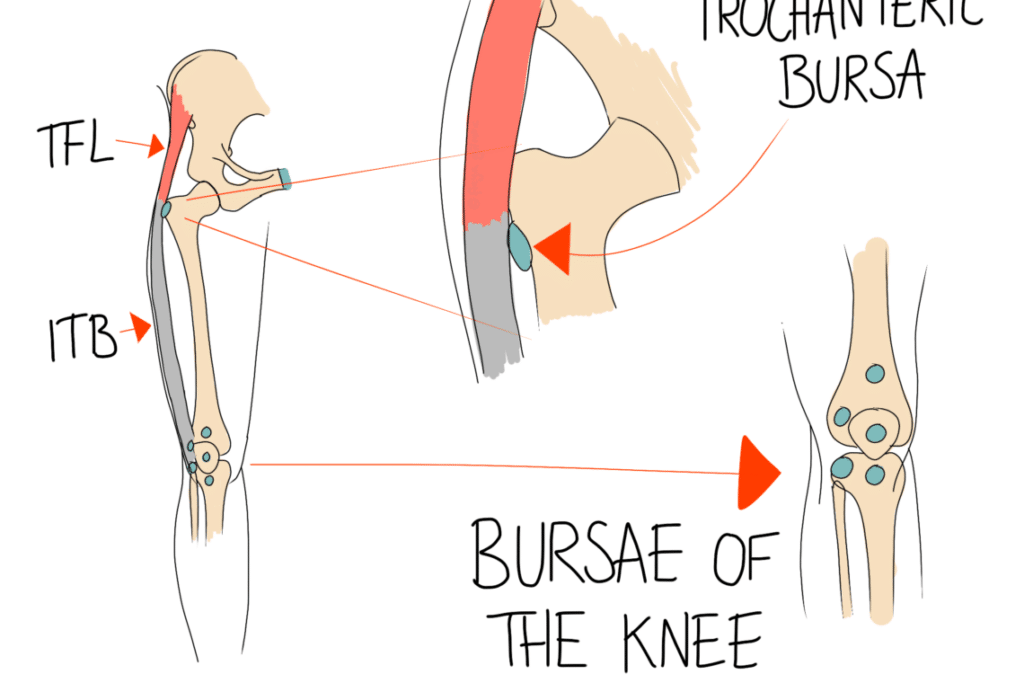

All over the body, there are little fatty cushions that sit between tendons and bones. These are bursae, and when they become irritated, you get bursitis.

There are countless bursae all over the body, and the hip area houses a handful of them. One bursa that’s often involved in bursitis is the trochanteric bursa. It sits on the greater trochanter, which is the lump of bone that sticks out at the top of the femur (thigh bone). There are always a few factors at play, including general health issues that might make a person predisposed to inflammation. But with trochanteric bursitis, there’s usually a predictable mechanical pattern at play too.
The trochanteric bursa protects the top of the IT band from friction from the femur. The IT band can be a bit of a contentious issue itself, with some people swearing by foam rolling it. But the research shows that, as it’s not a muscle, it doesn’t respond significantly to this. What does respond is the TFL: the small muscle that blends into the top of the IT band. It’s tension through this muscle that dictates how tight the IT band will be.
Furthermore, the TFL causes a tight IT band for a reason: to stabilise the knee. So you might find that you develop an ache in the outside of the thigh after a minor knee injury. It might not even give you any local symptoms, which is why it’s easy to blame the IT band for its own tension. But the trick to resolving the tension is to appease the knee.
What does all of this have to do with hip bursitis? It’s a sequence of tension that ends up with a irritated trochanteric bursa:
Because of the inflammatory nature of the condition, you’ll likely find that your pain is worse after rest, better with movement, and responsive to a cool compress. It tends to stick around too, so suffering with it for a while without much change can point the finger at bursitis too.
Of course, considering the pattern mentioned above, if you feel tension on the outside of the thigh and a problem in the knee, that might explain it too. But not all cases of hip bursitis will lead back to a knee issue. Some might follow trauma, postural issues, or a more local hip issue.
Your osteopath will listen to your history and examine any relevant areas to arrive at the diagnosis. With all of this information in mind, they’ll come up with a plan to treat all aspects of the problem. This will likely mean managing any underlying knee issue as well as encouraging movement to reduce any inflammation in the hip area.
Click here to make an appointment for your hip bursitis in Leicestershire or Rutland